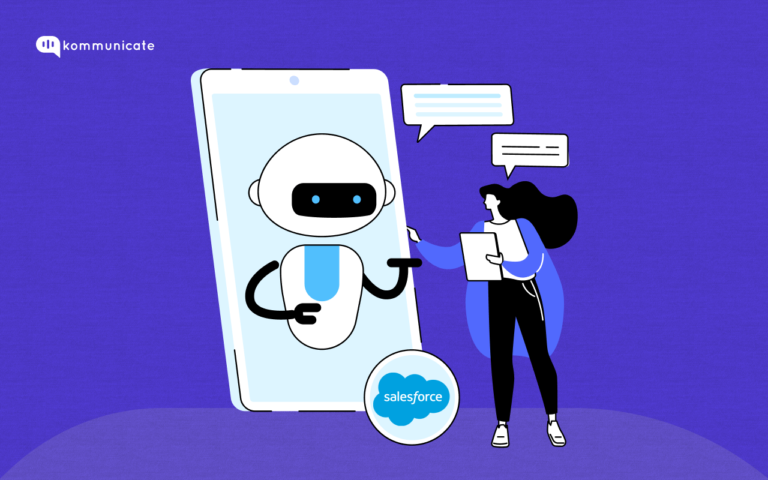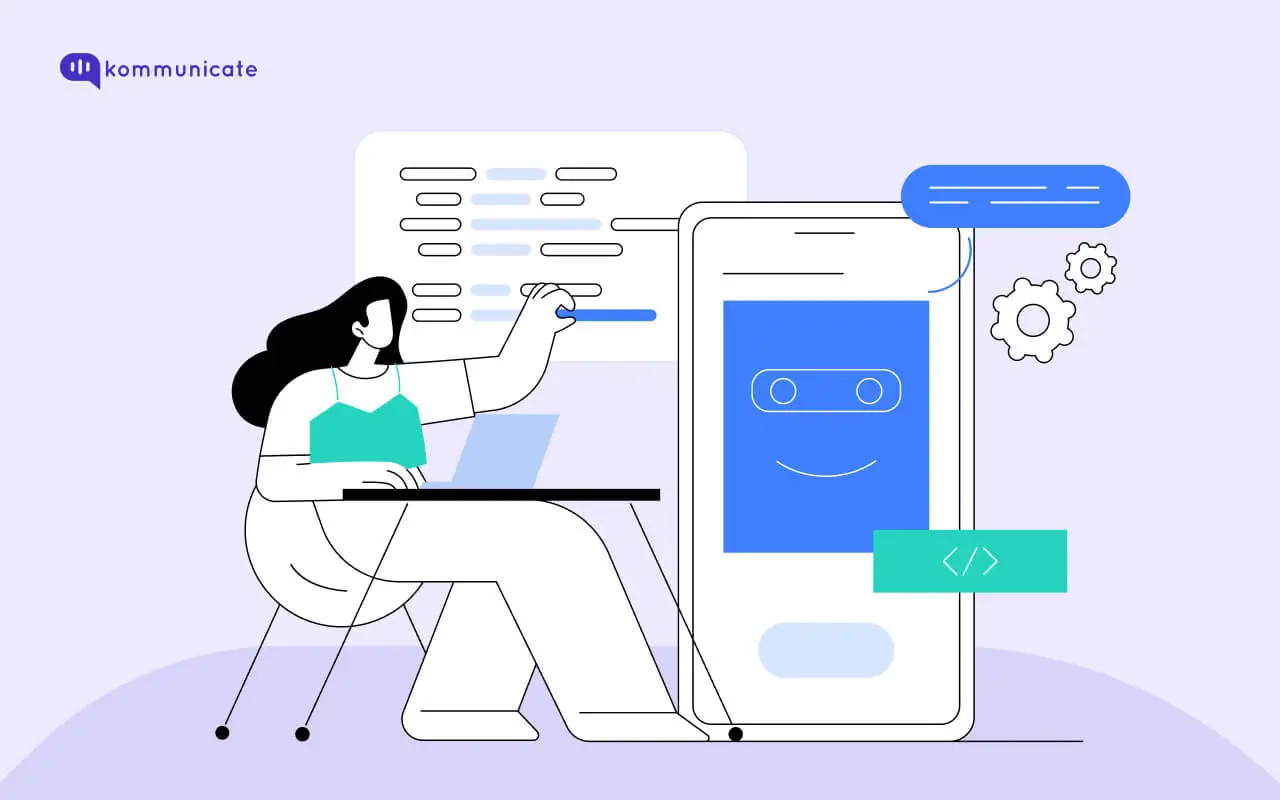Updated on January 31, 2023
Today, bots quickly responding to a query has become a thing, and it is only for the good of a business. 41% of customers prefer to interact on live chat, and 79% like it for fast responses. These studies indicate the potential of live discussions and quick reactions in topping the game of customer experience. That’s why virtual agents are conversing their way into organizational workflows. They give the entire interaction a human touch with AI-enabled capabilities. And they are NOT chatbots. If implementing a virtual agent is budding in your mind, then it is imperative to learn how useful it is and what makes it different from a chatbot.
Let’s begin.
What is a Virtual Agent?
A virtual agent is a conversational software program that uses artificial intelligence to address and respond to customer queries. It is programmed to recognize human speech, enabling it to work the way it does – with a more natural and flowy touch.
They are capable of providing an amalgamation of services, performing repetitive tasks, handling multiple chats at the same time, and discovering customer intents. They elevate human teams to shape a better customer experience and demystify the tasks for human agents by reducing the workload.
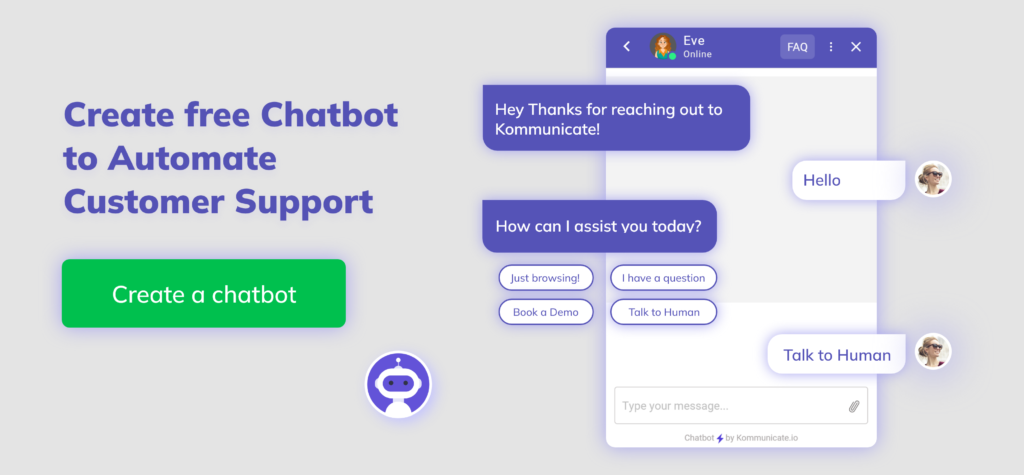
How does a virtual agent work?
The implementation and the use of virtual agents differ from organization to organization. But generally, a virtual agent requires you to lay down a workflow plan to carry out the expected tasks.
Whenever a customer makes a query, it uses natural language processing to spot the keywords used in the conversation. With the help of keyphrase detection, it responds to the scripted answers saved in its interface. This is what the essential virtual agent is capable of performing.
When it comes to advanced virtual agents, they take the help of technology to give back answers that have context and go beyond just scripted responses. Lower-end chatbots and virtual agents are incapable of performing such intensive tasks. It is only with the help of highly developed chatbots and virtual agents that you will be able to carry out conversations that have context and intellect to them.
Virtual Agent VS Chatbot – The Difference You Should Know
More and more businesses are incorporating virtual agents today, but the difference between a virtual agent and a chatbot is still unclear. The similarities between the two make identifying the difference in a task. For instance, both show up with a live chat window on the screen and are available 24/7.
A quick response to a query on a small chat window isn’t always the doing of a chatbot. Some virtual agents are always there to respond to various types of questions. But how do you recognize that? A thin line and cracking are the way to implement the right option for your sales operations.
Here are the differences between the two of them.
Capability
A chatbot typically works on the keyword in a customer query and responds to common questions from a set of pre-composed responses. Chatbots can be rule-based chatbots, button-based chatbots, more advanced natural language-based chatbots, voice bots, or more sophisticated AI chatbots.
On the other hand, a virtual agent is powered by AI technology and NLP, enabling it to understand user language, mimic human conversations, ask more questions to identify the gist of a query and direct the conversation to a human agent as questions become more complex.
Complexity
A highlighted difference between chatbots and virtual agents is that the former is notably easier to set up and use. The fact that it only addresses the most common queries and has easy functionality makes maintaining it a less expensive deal. However, chatbots can get complex, depending on the use case. As the bots get more and more complex, so does the cost of implementing these chatbots.
Virtual agents are sophisticated and more competent chatbots, to put it simply. The complexity and requirement of various resources with some training demand efforts in setting up and running virtual agents.
Purpose
Determining why you want a specific bot is what makes you see the difference between a chatbot and a more advanced chatbot – a virtual agent.
Chatbots serve the following purpose:
- Collect information, like customer requirements and personal details for lead qualification, before the chat is passed on to a human agent.
- More often, provide basic instructions to a customer by offering links to log in or blogs on the page.
- Performs routine tasks like scheduling appointments.
Virtual agents can be used to:
- Gather relevant information, understand customer intent, and provide personalized answers.
- Assist customers with basic troubleshooting.
- Interact with customers in a more human-like way and tonality.
- Perform repetitive tasks such as order management, IT assistance, etc.
- Only escalate highly complex chats to human agents.
Benefits of Using a Virtual Agent
A virtual assistant agent helps you stay in touch with your customers and provide quick responses to them even if you’re off the desk. It saves a lot of time and reduces the workload for your live agents. They can devote this time to resolving complex queries. It boosts employee productivity and contributes to a streamlined work process.
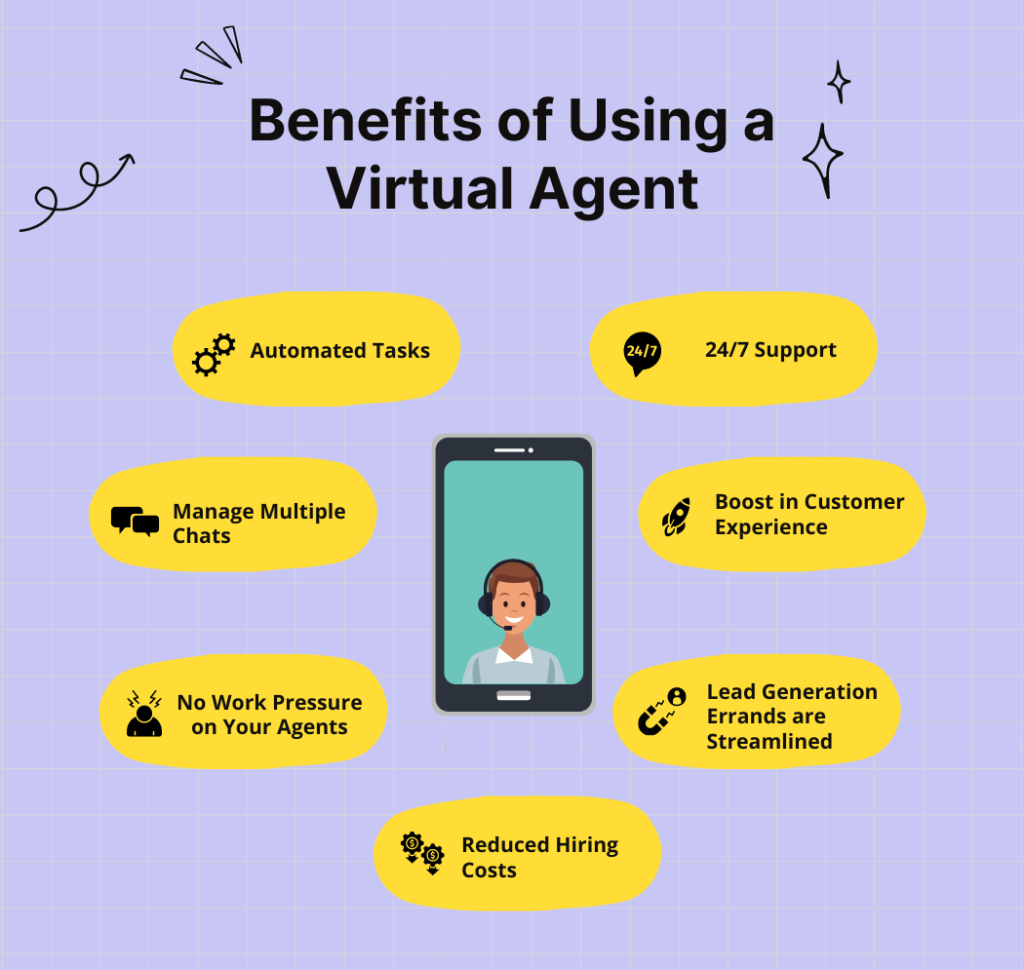
Let us take a look at the topmost benefits of this type of chatbot:
Automated Tasks
One of the biggest advantages of using a virtual agent is that it mitigates the repetition of tasks by automating them. There are various tasks that agents have to handle on repeat, such as order cancellation, registrations, scheduling, etc. You can employ a virtual agent to automate your customer service operations that keep coming back to you. It will also help you improve the response rate and allow your agents enough time to dedicate to queries that require human attention.
Manage Multiple Chats
A human agent can only pay attention to a limited number of queries simultaneously. When there’s a flood of chats, and you don’t want to make any of your customers wait, who can help you better than a virtual agent? A virtual agent can deal with all your customers seamlessly and diminish the waiting time.
No Work Pressure on Your Agents
One of the foremost reasons you might want to implement a virtual agent is that they greatly free up the time of human agents to do more. Since they automate several tasks and can handle multiple chats simultaneously, it ultimately checks the tasks off your agents’ to-do. Given the reduction in urgency required to handle it all, your agents can work with less stress and more ease.
Lead Generation Errands are Streamlined
Can a virtual agent back your agents with lead-generation tasks? Of course, it can. It can obtain relevant details like names, email addresses, phone numbers, and other essential details to profile a prospect. It is a steadfast way to get contact information for practices like follow-ups and lead qualifications.
Boost in Customer Experience
Irrespective of the level of interaction customers have with your business, they will always expect quick replies to their queries. The majority of customers expect agents to respond in less than 10 minutes. You can keep up with a good customer experience by implementing a virtual agent and quickly responding to your customers’ questions. Lastly, naming your virtual agent has proven to be extremely beneficial for improving customer engagement.
24/7 Support
TThis is one of the most notable benefits of using a virtual agent for apparent reasons. Providing round-the-clock service reduces the waiting time and ultimately boosts customer engagement. Self-service also leads to a significant spike in customer satisfaction scores. Several companies worldwide implement VAs with multilingual self-service for seamless communication with customers from different countries.
Reduced Hiring Costs
Using a virtual agent can help you reduce hiring costs and accelerate the scalability of your business and virtual agent is not to replace but back your human agents at the desk. However, combining automated tasks and human support can positively impact hiring costs. Unlike human agents, virtual agents do not need to be hired or given extensive training. Moreover, you don’t want to hire new agents to perform repetitive tasks. Therefore, it is best to balance the role of virtual and human agents to avoid hiring more for a job your VA can do.
Use Cases of Virtual Agents
From e-commerce to IT, a virtual agent gives a hand in demystifying the task of responding to the same queries from different customers. Let’s take a look at the common use cases of virtual agents and how they are helping human agents:
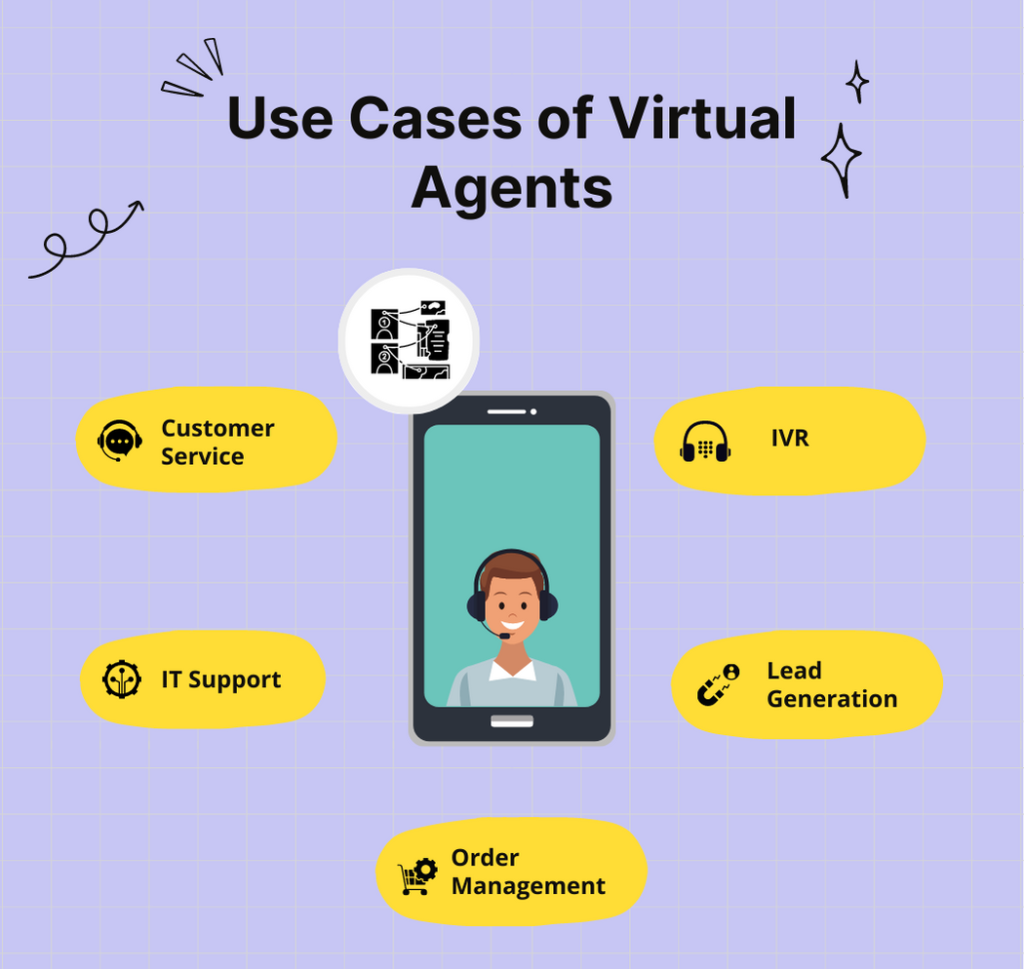
Customer Service
A virtual agent cannot replace your live agents. However, they can be incredibly useful to them when it comes to handling multiple chats on general queries. It eventually reduces the work pressure and wards off stress.
There are basic queries that your live chat agents come across several times a day, like order status, account, returns, etc. A virtual agent can handle these questions in real-time, allowing you to focus on questions requiring human intervention.
IT Support
An IT help desk receives several queries every day. Customers have requests for troubleshooting, software updates, and password resetting. It can resolve basic queries can answer fundamental questions in no time, employing it can create a ticket. It improves response rates and boosts customer satisfaction. Moreover, it takes the pressure off your IT staff’s shoulders.
Lead Generation
It proves to be tremendously helpful when it comes to lead generation tasks. It helps your sales team generate leads more efficiently by doing a lot of work on its own. The sales team can use a virtual agent to obtain basic details of customers, such as their names, phone numbers, email addresses, and so on. It also helps dig more about their expectations and reasons to sing in.
Order Management
Retail and e-commerce have customer queries in massive numbers. These queries are generally about canceling, returning, changing orders, changing/modifying address details, and order status. Virtual agents can respond to such questions depending on the product or the information the customer wants to have.
They are also useful in sending reminders to your customers to make purchases again based on their past orders. They can also send alerts regarding orders and purchases via email or text. It ensures that your customers don’t have to wait for the order status and gives them a smooth experience.
IVR
Contact centers have much to gain from using a virtual agent in the IVR system. Virtual agents make a suitable replacement for traditional IVR as they use smart routing. Not to mention, it depends on what your customer communicates. For instance, if your customer wants to know about the order status, the virtual agent will either respond to their query or direct route the call to the right live agent.
Moreover, they can also authenticate your customers based on details like their registered number, which is an excellent way to personalize their services. By implementing this solution, your customers and agents can save a good amount of time.
How can a virtual agent help in generating revenue
Virtual agents are highly beneficial for businesses with inbound marketing requests. It can help you in converting your MQL to SQL conversion rate. Virtual agents are successful in increasing the number of appointments for sales and converting visitors into customers.
The tasks are carried out by two strategies. First is by digging out the personal information of the customer through which your executive will be able to carry out personalized and persuasive conversations. By having a personal and emotional touch to the conversation, customers are more likely to buy your products and services. Secondly, it also saves a lot of time by carrying out so many tasks. The same time can be used in other vital areas that can generate better results.
Final Thoughts
A chatbot and a virtual assistant agent essentially accomplish the same thing, albeit a virtual agent can be considered an advanced version of a chatbot. Chatbots started out as simple pieces of software which can carry out repetitive tasks, but as time progressed, we can see chatbots becoming more and more advanced.
So, if your plan is to implement a virtual agent, determining how it is useful to your requirements and needs should be your first move. You can also measure your chatbot’s performance with specific metrics and chatbot data. In the end, it is all up to you, dear reader, as to the sophistication of the solution required.



